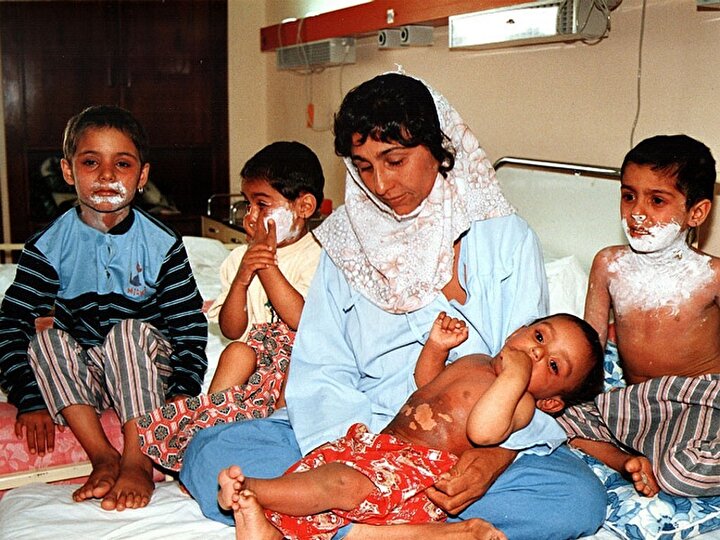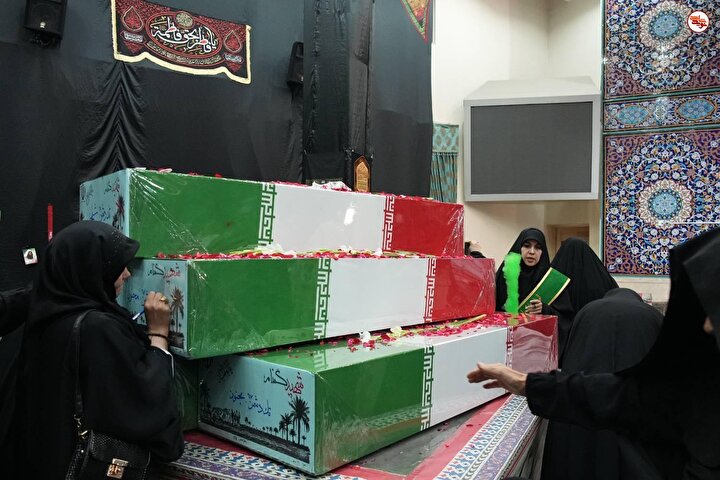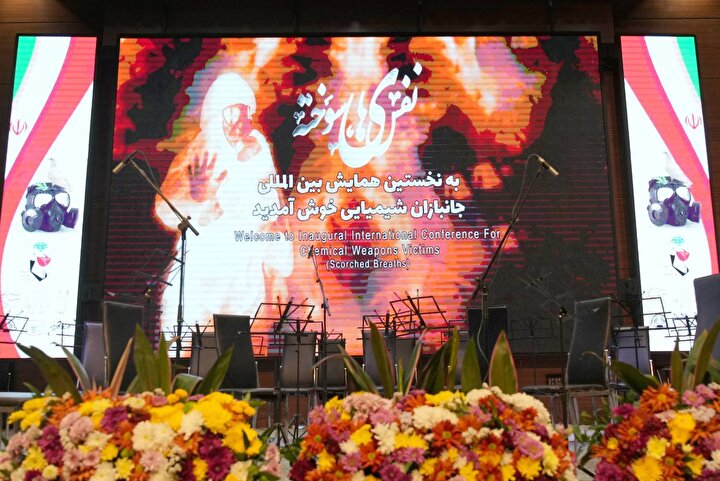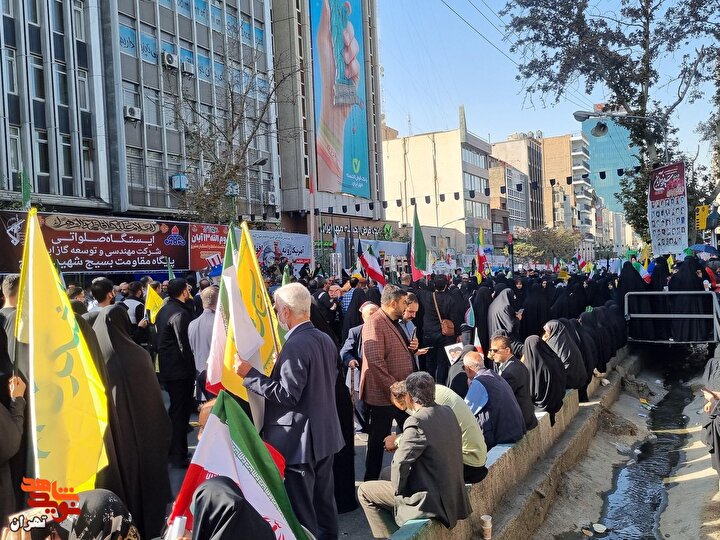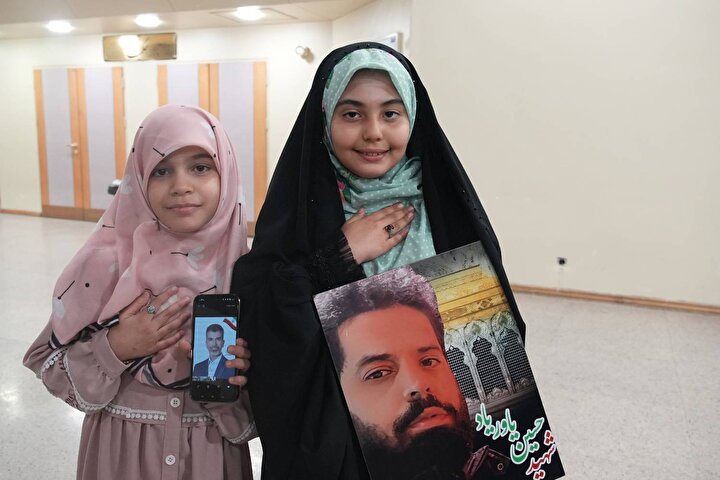
Mohammad Ali Mojahedi: The reflection of Aashoura in Literature a reason for emergence of revolutionary incentives.
TEHRAN, (SCIB) - Reflection of the two events Aashoura and Qadir in Persian literature are among reasons for the formation of this revolution. According to Shahed Cultural Information Base, The poet Mohammad Ali Mojahedi stated in an interview “In early Iranian Literature, Aashouraee poetry is much revered. Studying early Iranian Literature indicates that Aashoura even has been a very important topic in this literature, To the extent that one can consider Aashoura the main source of Islamic Revolution. The author of poetry collection “ At the presence of Lahootis”? added “ An important event like Aashoura hasn’t found the reverberation it deserves in Islamic countries; therefore we need to recount this event in a proper and precise manner so that it wont incur any destructive distortions. Late Mohaddes Noori, a contemporary of Nasser-eldin Shah has cleverly and subtly pointed to this hazard in his book “Distortions of the History of Aashoura”?. In his work, he has enumerated activities that have given rise to incorrect readings of Aashoura and has based his narration of events upon credible historical documents. This researcher went on to enumerate some of the distortions of Aashoura event and said “ In many of the mourning ceremonies for Imam Hussein one hears about a 1000000 man army of enemies, so that if consider the land of Karbala and its distance from Kufeh this huge army with its ammunitions and war equipment can easily cover this gap. Late master Morteza Motahari believed that fighting this immense army would need at least 72 hours time, even if one person was killed every second!! Whereas the whole of Aashoura events took approximately 6 or 7 hours on the 10th day! The poet pointed to another distortion of Aashoura event and reiterated “Another distortion of the history of Aashoura is the marriage of Qasem ibne Hossein. He has been introduced as a teenager whose wedding is supposed to have occurred on the evening of Aashoura. But we know that he was only 13 years of age at the time of this event; furthermore members of that caravan were busy praying and recounting their last wishes; assuming such a decision by the son of an innocent Imam that too on that particular night can not be reasonably or emotionally acceptable or credible. Neither do we have any evidence of such an event.”? This author put emphasis on the essence of Imam Hussein’s uprising and said “ The motto of Imam Hussein’s uprising was contesting ignorance and purging the society of every evil; meaning that one should resist any obstacle that might come in the way of reaching enlightenment. He said we are obliged to follow Imam Hussein’s model and added “The famous sentence “Every day should be Aashoura and every land, Karbela”? denotes the same obligation. It has mistakenly been considered a hadith. It is still very acceptable to scholars although it was not uttered by an innocent person. The sentence implies that we Shiites should reach a point where we are prepared to contest the evil everywhere and all the time. We shouldn’t focus all our attention only on the hardships and miseries that Imam Hussein and his family went through; we should realize the beauty of this event and recount this beauty in religious gatherings to provoke Islamic sentiments just like Hazrat-e-Zeinab did”?. Mohammad Ali Mojadehi was born in the year 1322(1943). He has published several books in the field of ritual (religious) literature two of which were praised as the year’s best book. His other book “A survey into Prophetic Poetry”? will be published by the end of March.
TEHRAN, (SCIB) - Reflection of the two events Aashoura and Qadir in Persian literature are among reasons for the formation of this revolution. According to Shahed Cultural Information Base, The poet Mohammad Ali Mojahedi stated in an interview “In early Iranian Literature, Aashouraee poetry is much revered. Studying early Iranian Literature indicates that Aashoura even has been a very important topic in this literature, To the extent that one can consider Aashoura the main source of Islamic Revolution. The author of poetry collection “ At the presence of Lahootis”? added “ An important event like Aashoura hasn’t found the reverberation it deserves in Islamic countries; therefore we need to recount this event in a proper and precise manner so that it wont incur any destructive distortions. Late Mohaddes Noori, a contemporary of Nasser-eldin Shah has cleverly and subtly pointed to this hazard in his book “Distortions of the History of Aashoura”?. In his work, he has enumerated activities that have given rise to incorrect readings of Aashoura and has based his narration of events upon credible historical documents. This researcher went on to enumerate some of the distortions of Aashoura event and said “ In many of the mourning ceremonies for Imam Hussein one hears about a 1000000 man army of enemies, so that if consider the land of Karbala and its distance from Kufeh this huge army with its ammunitions and war equipment can easily cover this gap. Late master Morteza Motahari believed that fighting this immense army would need at least 72 hours time, even if one person was killed every second!! Whereas the whole of Aashoura events took approximately 6 or 7 hours on the 10th day! The poet pointed to another distortion of Aashoura event and reiterated “Another distortion of the history of Aashoura is the marriage of Qasem ibne Hossein. He has been introduced as a teenager whose wedding is supposed to have occurred on the evening of Aashoura. But we know that he was only 13 years of age at the time of this event; furthermore members of that caravan were busy praying and recounting their last wishes; assuming such a decision by the son of an innocent Imam that too on that particular night can not be reasonably or emotionally acceptable or credible. Neither do we have any evidence of such an event.”? This author put emphasis on the essence of Imam Hussein’s uprising and said “ The motto of Imam Hussein’s uprising was contesting ignorance and purging the society of every evil; meaning that one should resist any obstacle that might come in the way of reaching enlightenment. He said we are obliged to follow Imam Hussein’s model and added “The famous sentence “Every day should be Aashoura and every land, Karbela”? denotes the same obligation. It has mistakenly been considered a hadith. It is still very acceptable to scholars although it was not uttered by an innocent person. The sentence implies that we Shiites should reach a point where we are prepared to contest the evil everywhere and all the time. We shouldn’t focus all our attention only on the hardships and miseries that Imam Hussein and his family went through; we should realize the beauty of this event and recount this beauty in religious gatherings to provoke Islamic sentiments just like Hazrat-e-Zeinab did”?. Mohammad Ali Mojadehi was born in the year 1322(1943). He has published several books in the field of ritual (religious) literature two of which were praised as the year’s best book. His other book “A survey into Prophetic Poetry”? will be published by the end of March.
TEHRAN, (SCIB) - Reflection of the two events Aashoura and Qadir in Persian literature are among reasons for the formation of this revolution. According to Shahed Cultural Information Base, The poet Mohammad Ali Mojahedi stated in an interview “In early Iranian Literature, Aashouraee poetry is much revered. Studying early Iranian Literature indicates that Aashoura even has been a very important topic in this literature, To the extent that one can consider Aashoura the main source of Islamic Revolution. The author of poetry collection “ At the presence of Lahootis”? added “ An important event like Aashoura hasn’t found the reverberation it deserves in Islamic countries; therefore we need to recount this event in a proper and precise manner so that it wont incur any destructive distortions. Late Mohaddes Noori, a contemporary of Nasser-eldin Shah has cleverly and subtly pointed to this hazard in his book “Distortions of the History of Aashoura”?. In his work, he has enumerated activities that have given rise to incorrect readings of Aashoura and has based his narration of events upon credible historical documents. This researcher went on to enumerate some of the distortions of Aashoura event and said “ In many of the mourning ceremonies for Imam Hussein one hears about a 1000000 man army of enemies, so that if consider the land of Karbala and its distance from Kufeh this huge army with its ammunitions and war equipment can easily cover this gap. Late master Morteza Motahari believed that fighting this immense army would need at least 72 hours time, even if one person was killed every second!! Whereas the whole of Aashoura events took approximately 6 or 7 hours on the 10th day! The poet pointed to another distortion of Aashoura event and reiterated “Another distortion of the history of Aashoura is the marriage of Qasem ibne Hossein. He has been introduced as a teenager whose wedding is supposed to have occurred on the evening of Aashoura. But we know that he was only 13 years of age at the time of this event; furthermore members of that caravan were busy praying and recounting their last wishes; assuming such a decision by the son of an innocent Imam that too on that particular night can not be reasonably or emotionally acceptable or credible. Neither do we have any evidence of such an event.”? This author put emphasis on the essence of Imam Hussein’s uprising and said “ The motto of Imam Hussein’s uprising was contesting ignorance and purging the society of every evil; meaning that one should resist any obstacle that might come in the way of reaching enlightenment. He said we are obliged to follow Imam Hussein’s model and added “The famous sentence “Every day should be Aashoura and every land, Karbela”? denotes the same obligation. It has mistakenly been considered a hadith. It is still very acceptable to scholars although it was not uttered by an innocent person. The sentence implies that we Shiites should reach a point where we are prepared to contest the evil everywhere and all the time. We shouldn’t focus all our attention only on the hardships and miseries that Imam Hussein and his family went through; we should realize the beauty of this event and recount this beauty in religious gatherings to provoke Islamic sentiments just like Hazrat-e-Zeinab did”?. Mohammad Ali Mojadehi was born in the year 1322(1943). He has published several books in the field of ritual (religious) literature two of which were praised as the year’s best book. His other book “A survey into Prophetic Poetry”? will be published by the end of March.
